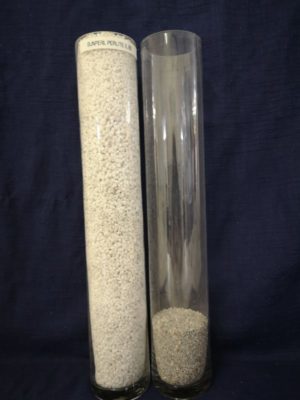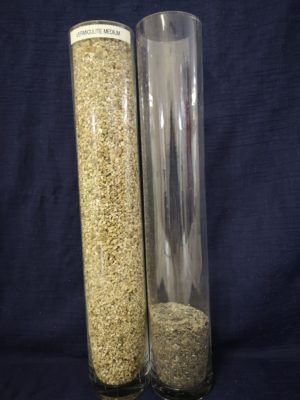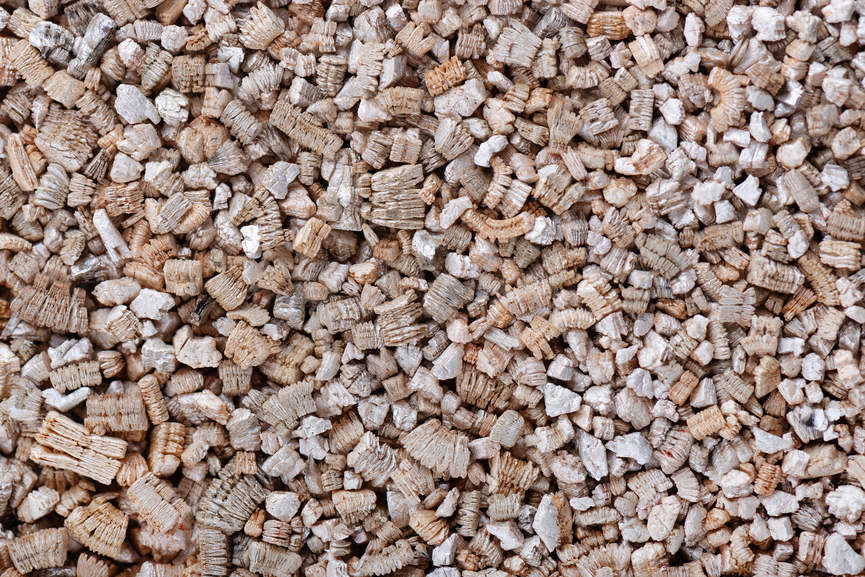Perlite and vermiculite: the importance of growing media density
When buying perlite and vermiculite in litres, the product with the lower density remains the better choice. Our latest blog post explains why.
Most people know that 1 liter of water weighs typically 1 kg. This fact is sometimes confused when dealing with products that has significantly lower density as is the case with growing media. People tend to buy a “bag” or per Kg not realising that there could be a significant difference in the volume of the product that you buy.
Formulation
The relationship between mass, volume and density is the simple formulation of:
Density = Mass / Volume
P = M/V
From this equation, you can generate a formula to calculate any of the other unknowns, as long as you have the other two know values i.e.
M = P X V
V = M/P
The standard unit for density is Kg/cubic meters. In many instances, people talk of densities in terms of grams per litre as it sounds “better” or beacuse, in the lab, you would typically fill a one-liter flask and weigh the material in grams.
An example of this will be Perlite that weighs 100 kg/cubic meter i.e. the density is 0.1. Instead of using this, people will call this density “100” i.e. 100 grams per litre.


Why is density important in perlite and vermiculite?
The following are a few reasons why density is important:
- In a horticultural environment, you typically want to fill a container such as a planter. The lower the growing media density ,the more volume of product you will get per kg you have bought.
- The lower the density, the more air is in the medium. This allows for the following:
- Improved drainage
- Improved insulation in cold climates
- More air-filled porosity that is required for the roots to grow and transpire.
- The lighter the planter will be to move around.
- When the manufacturer exfoliates the perlite or vermiculite, he starts off with a dense ore that is then exfoliated to the final low-density product. The lighter the product, the smaller quantity of initial ore is used to manufacture the final product. This leads to lower input cost, which should translate into a cheaper product for the customer. The less ore the supplier uses, the less energy he needs to produce a litre of product. Once again, this drives the cost of the final product down. Energy cost is a major component of the manufacturing expense.
- When the growing media breaks down during handling/manufacturing, the small particles find its way in between the larger particles, this, in turn, increases the packing density of the media. Fine particles are detrimental in a growing media as it reduces the air-filled porosity that in turn affect root growth. It therefore stands to reason that buying in litres, the product with the lower density remains the better choice.
- There is a direct correlation between density and the strength of the particles, therefore it is also important to note that very light material might not be as good as it will need to be handled carefully to prevent unwanted breakdown.
What is a typical density of a growing media for perlite and vermiculite?
The density of the final growing media is determined by the exfoliation process as well as the original ore quality. Growing media with density ranging from 70 to 120 g/liter is typical.
Need more information about perlite or vermiculite? Then contact us today.


